In this article, we publish information gradually reflecting the name of the PIQASO project: Problem, Information, Questions, Answers, Solution, Outcome.
Problem
- School shootings cause deaths in American educational institutions every year. With every case it is clear that there are gaps in gun laws and preventions.
- It is also clear that mental health services failed to help the individual who decided to carry out the shooting and warning signs were missed.
Information
Access to guns
- States with the most school shootings in 2022 were California (164), Texas (135), Florida (90)
- States with the highest number of guns in 2022: Texas (588,696), California (344,622) and Florida (343,288)
- Current statistics and previous research suggest that there is a relationship between access to guns and number of school shootings.
Issues with gun laws in the top 3 states for gun ownership and school shootings
- Texas: Unlike Florida and California, Texas does not have Extreme Risk Protection Orders (ERPOs) (also known as red flag laws) in place to stop those who may be a danger to themselves or others from possessing a gun. By the end of 2021, only 19 states had adopted ERPOs.
- Florida: The bill enabling those without a licence to carry a concealed handgun may be passed- “the constitutional carry bill”. This makes guns more easily accessible to a licence holder and potentially to any younger person who may be with them.
- California: California is a state with some of the strictest gun laws- this suggests other factors may be responsible for high numbers of school shootings
Mental health
USA youth mental health ranking 2022. 1-13 indicates that mental illness is not as common within the state and there is easy access to care. 39-51 indicates that there is a greater presence of mental illness and difficulties in access to care.
Texas- 41 out of 51 for youth mental health
- 314,000 adolescents aged 12-17 are diagnosed with depression
- 64.7% of these people did not receive care in the last year according to the National Alliance for Mental Illness.
- Texans are 5x more likely to not be able to afford mental health care as they are primary health care
- In 2021, 3,930 people took their own life. On average, in the US, 1 person takes their own life every 11 minutes.
Florida- 30 out of 51 for youth mental health
- In December 2022 a ‘youth mental health crisis’ was declared in Florida. The numbers of young people visiting the ER on mental health grounds increased during the pandemic.
- In a recent report by the Hopeful Futures Campaign, it was stated that the suitable ratio of school psychologists to students is 1 to 500. In one area in Florida it is roughly 1 to 1,600 students.
- Some have speculated that many school psychologists may be leaving the profession due to being paid poorly, they are paid below the average Floridian salary (Tampa Bay Times).
California- 36 out of 51 for youth mental health
- There are not enough mental health professionals to meet demand. A bill is being put forward that would fund education of more professionals aiming to increase the number of school counsellors by 10,000.
- Youth mental health related visits to the Emergency Room increased during the pandemic.
- Suicides of black youth doubled from 2014 to 2020
- Overdoses for young people aged 15 to 19 roughly tripled from 2019 to 2020. Substance abuse is often comorbid with certain mental illnesses (Cal Matters).
Mental health of school shooters
- 78% had attempted suicide or experienced suicidal thoughts, 71% had been bullied and 61% had shown signs of or been diagnosed with depression in the past. (from a Secret Service and Department for Education report)
- Also, 34% were socially isolated and were seen as ‘loners’ (Juan & Hemenway, 2016)
- Mental health initiatives are promoted in states such as California. Despite having strict gun control measures the state also has a high number of school shootings
- Mental illness is often used by conservatives to explain gunman’s behaviour and avoid tighter gun control measures.
Key school shooting incidents and shooter profiles
Columbine High School (1999)
- Shooters: Dylan Klebold and Eric Harris, students at Columbine High School, killed 15 people before taking their own lives.
- Klebold was depressive and suicidal
- Studies of Harris’ private life and journal reveal a deep hatred for society and the school environment. They show him to be psychopathic
- They were not outcasts as many media reports suggested. They had formed some friendships
- The event was planned and calculated for approximately a year and was supposed to be much larger resulting in much collateral damage.
- Columbine was the first school shooting to be widely reported by the media. Some reports were misleading and added to public fear. There were claims that tapes released by the shooters were clear indications that they had plans to kill. These were in fact part of a drama performance.
- The shooting led to an increase in school gun control measures
- Students who identified with the shooters wished to replicate what was seen at Columbine. The event revealed the difficult social environment of American schools.
- Many smaller shootings occurred post Columbine as people attempted to re-enact what had happened at the school.
- It is accepted that Columbine is the school shooting that has been the most widely reported by the media. This may be partly due to its high death toll. However, using Columbine and other school shootings as a blueprint it was found that these events are mostly reported on in the same way. A recent study identified seven stages to the media reporting of a school shooting: tragic shock, first witness reports, identification of shooter, reports of character of shooter, media branding (what name is given to the event), official response and repeat of cycle. As more information becomes known to the news organisations the facts of their reports drastically change (Murray, 2017).
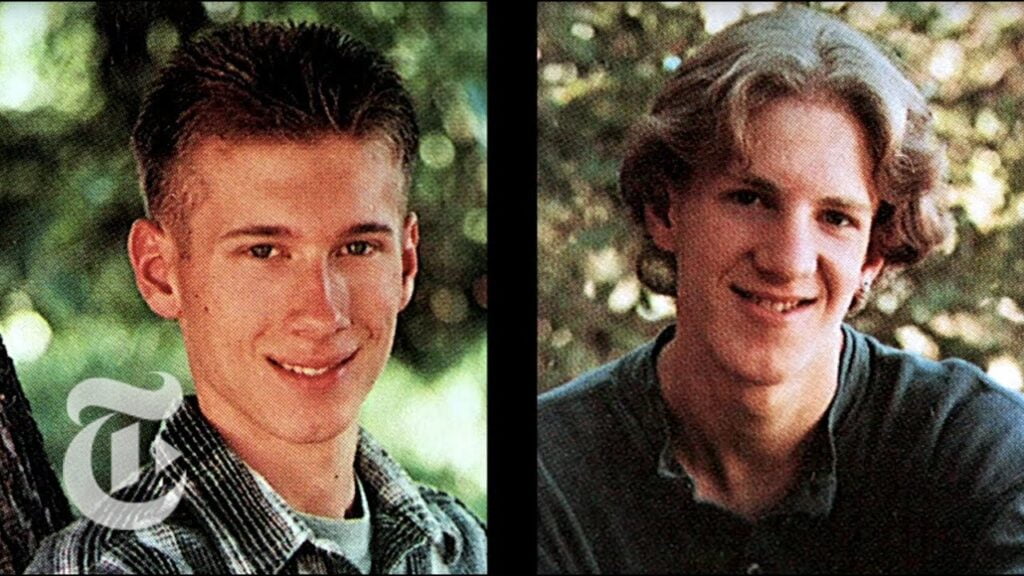
Virginia Tech (2007)
- Seung-Hui Cho, a student at the university, killed 32 people before taking his own life.
- The shooting has the 3rd highest death toll in America.
- Cho had a history of suicidal thoughts and was known to the university counsellors. He had also spent some time in a psychiatric hospital as it was thought that he was at risk of taking his own life.
- However, after 2005 he had no contact with any of these services.
- No one suspected that he had plans of homicide
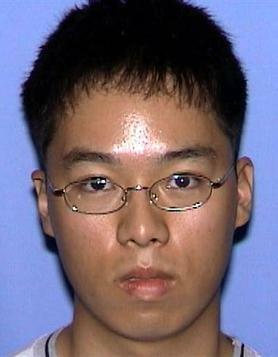
Sandy Hook Elementary School (2012)
- Shooter: Adam Lanza, had previously attended Sandy Hook Elementary, killed 28 people
- Lanza left education and was unemployed.
- He demonstrated military aspirations and struggled with manhood and the pressures of society. For example, he posted on social media that he castrated himself at 15 as an ‘act against society’.
- He failed to form any meaningful relationships and experienced isolation (Langman, 2016)
- The fact that the victims were so young led to greater fear as Lanza’s actions were almost impossible to explain.
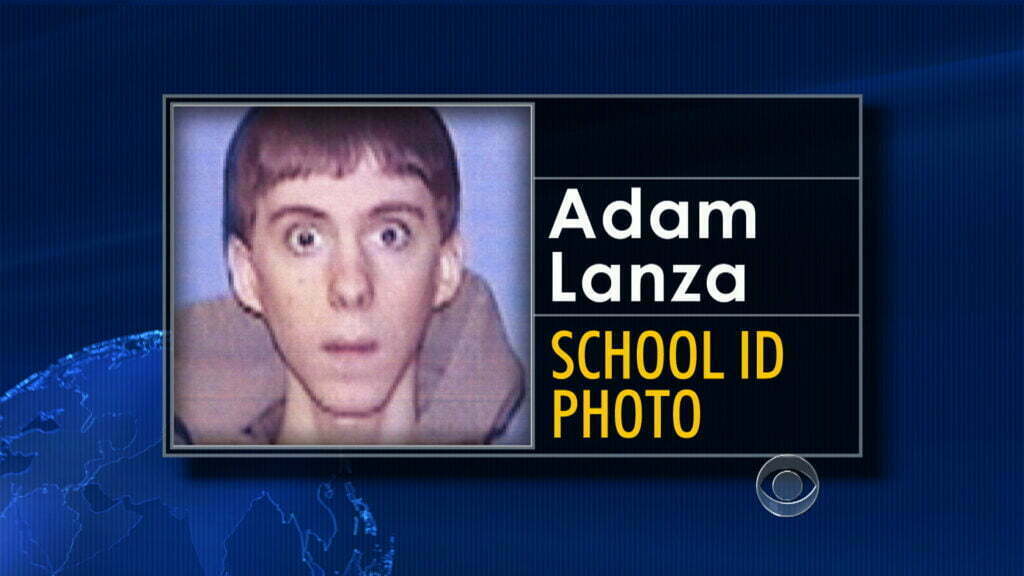
Several smaller school and university shootings occurred following the Sandy Hook elementary school shooting.
Stoneman Douglas High School (2018)
- Shooter: Nikolas Cruz, former student at Stoneman Douglas High School, killed 17 people
- There appears to be warning signs missed- a man reported a comment Cruz left on a social media page to the FBI but it was not addressed- “I’m going to be a professional school shooter” (FBI.gov)
- There were also clear security failures- some of the doors of school buildings were unlocked allowing for easy entry. The security cameras had a few minutes delay
- As a result, police were reported as arriving late to the school
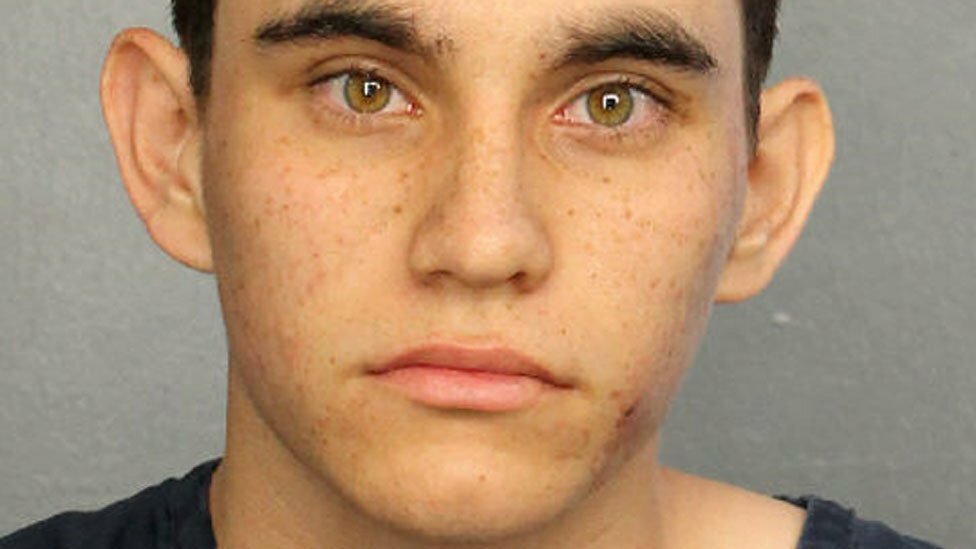
By the following May another school shooting had occurred in Sante Fe, Texas. Dimitrois Pagourtzis killed 10 people and injured 10 more at Sante Fe High School. In this case there also appeared to be warning signs missed. Students at the school describe the shooter as often being alone (CNN)
Robb Elementary School, Uvalde, Texas (2022)
- Shooter: Salvador Ramos, Robb Elementary School, killed 19 children and two teachers
- He bought the gun legally at the age of 18
- Posted on social media shortly before the attacks- “I’m going to shoot my grandmother”, “I shot my grandmother” and “I’m going to shoot an elementary school”. He had also posted several disturbing images of firearms (AP News)
- There were clear failures of the school’s security measures including their social media programme to find potential threats. The police were also reported to be slow to respond.
- Survivors of the Sante Fe shooting say that their calls to change gun laws in Texas were unsuccessful (US Today News).
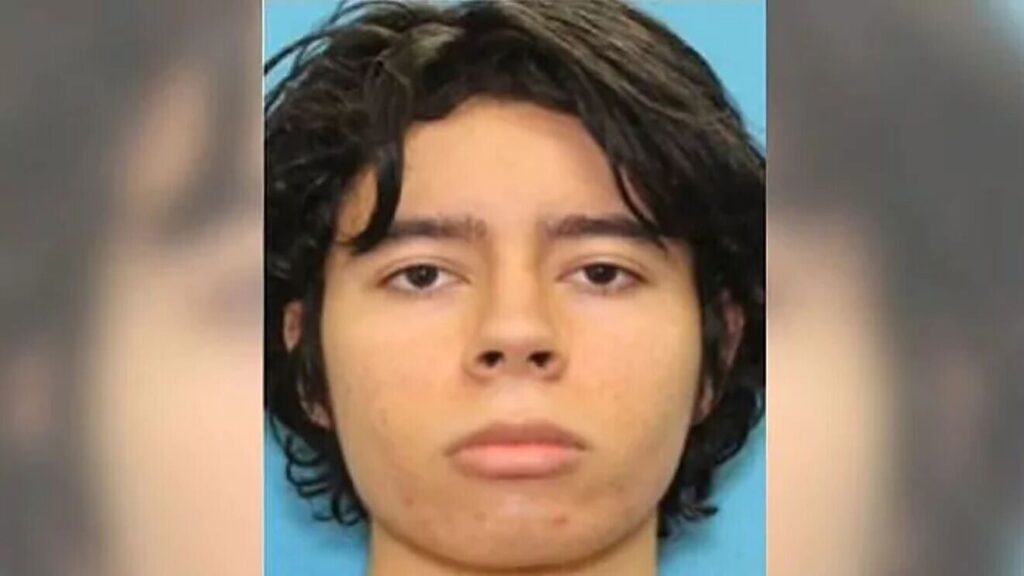
Summary
- There are clear issues with American gun laws and their approach to dealing with their mental health crisis
- Examining individual cases demonstrate how young people can easily become disconnected from or turn against society. Many of them feel isolated or suicidal.
- Cases also highlight how school shooting preventions are disorganised and ineffective.
- Researchers also argue that the media plays an important role in how school shootings are represented. They decide how to frame the information. One could argue that shootings with a high death toll receive more coverage. However, it is clear that each shooting is reported on in a similar way.
Questions & Answers
Social isolation contributing to school shootings and its rise during the pandemic
– How much does social isolation contribute to the choice to carry out a school shooting?
– How should we approach dealing with social isolation after the pandemic?
Juan & Hemenway (2016) carried out a study with 1,878 Boston adolescents to investigate this link. Their survey and subsequent statistical analysis found that social connectedness was a mediating factor between depression and gun carrying in schools.
Through these findings they suggest that social isolation is an important contributor to gun carrying and therefore may play a role in causing school shootings. Juan & Hemenway advocate for a system where, alongside effective gun control laws, communities try to increase social connectedness for individuals who may feel isolated. This will hopefully reduce gun carrying in schools and the violent acts that come with it. To support this, they point to Bowlby’s Attachment Theory (1969) which states that relationships with others increases the individual’s sense of safety and security. Equally, Hirschi’s Social Control theory (1969) states that secure attachments to family and teachers decreases the chance of criminal behaviour.
Given that the pandemic has seen a clear rise in social isolation it seems that implementing measures to increase social connectedness in schools and communities is more important than ever.
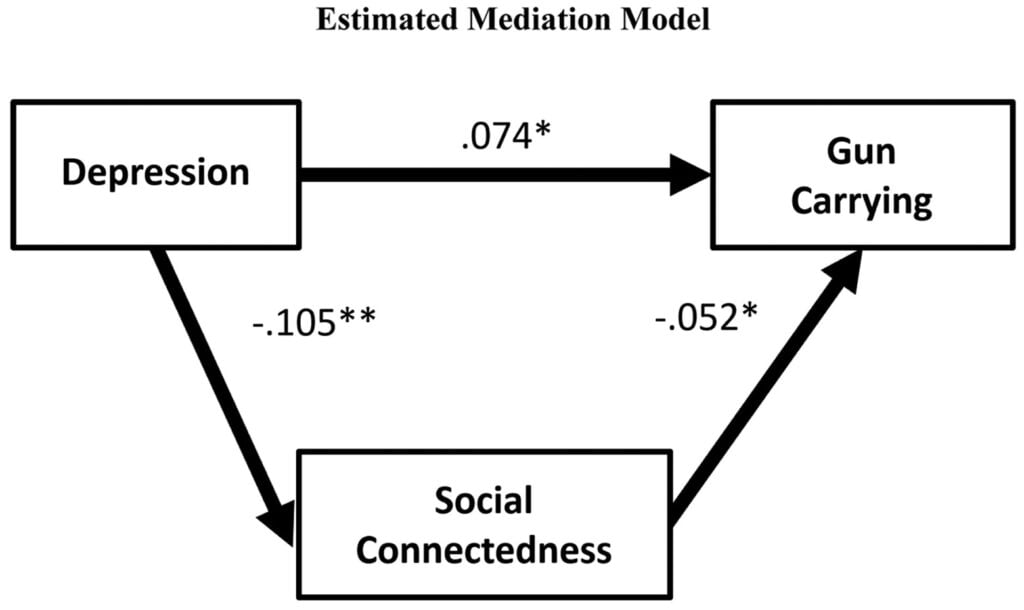
Changes that should be made to gun laws and preventions in states with high numbers of school shootings
– What changes should be made to gun laws and prevention in states such as Texas where school shootings are relatively common?
– What strategies should be used to make and adhere to these changes?
Researchers have argued that political courage is needed to make the necessary changes to gun laws and preventions in the USA. Reeping (2022) explained that the research demonstrates what needs to be done, someone just needs to be brave enough to do it. He proposes that policy makers should avoid making reactionary moves such as increasing school security and numbers of police after a shooting as these strategies are often not effective.
He argues that ERPOs, child access prevention (CAPs) and safe storage should be focused on. He also points to the recent school shooting in Uvalde, Texas to suggest that the legal age to buy a gun in the state should be raised from 18 to 21. He believes that the research shows that these preventions are most effective and that they will reduce the number of school shootings.
He highlights the importance of community interventions in states where school shootings are common. There is research to show that increasing the amount of green space and youth schemes in communities is linked to reduced gun violence. He contends that focusing on these interventions will also help prevent gun violence by improving the wellbeing of the residents. Overall, Reeping advocates for an approach which prevents rather than reacts to school shooting events and focuses on improving the wellbeing of the residents in states where shootings are more common.
Research has also looked into the recent Texan bill which allows concealed carrying of handguns on university campuses. Unlike other states, Texas is flexible on how these universities adhere to this rule and how they adjust their campus to keep the students safe. The basics of the legislation state that any person with a licence is allowed to carry a concealed handgun on university campuses.
Short (2017) provides a review of the first year of campus carry in Texas. He argues that campus carry may be an acceptable change to the gun laws pointing to the fact that the first year has not seen any gun violence incidents directly related to the law. He also contends that being flexible on how universities adhere to the legislation enables them to adjust their guidelines to their specific environment. Short highlights that many universities enforce safe storage regulations and ban carrying of guns in areas where there may be children or adolescents. Finally, he argues that Texas’s campus to carry arrangement could be used state-wide.
Although the first year of Texas campus carry appears to be successful, could having such easy access to guns increase gun violence in the future?
Media and its impact on school shootings
– What effects will the inevitable future rise in social media use will have on school shooting events and their aftermath?
The use of social media is rising. 4.48 billion people currently use social media, and this is more than two times what it was in 2015. Researchers have been investigating how social media can impact a school shooting and its aftermath. For example, Lee et al., (2022) conducted research into how misinformation about a mass shooting is spread on social media just after it has happened. It was found that certain groups of people termed “opinion leaders” have a disproportionate amount of influence on others views of the event during discussions on social media. It is argued that it is important to act quickly in preventing this spread of misinformation, ideally, as soon as an event has occurred because this is when there is most uncertainty. From this it is clear that a rise in the use of social media may lead to an increase in the spread of misinformation about school shootings.
Ruddock (2013) presents the idea of ‘media societies’ which refers to the fact that media is an intrinsic part of school shootings rather than just a platform from which to report them. He gives the example of the Virginia Tech shooting (2007). Seung-Hui Cho mailed a package to NBC containing his multimedia manifesto (including footage of his shooting). There was debate over whether to air the material given that it may encourage other individuals to carry out similar shootings. Despite this, parts of the manifesto were aired a few days later. It is clear from this that media platforms have an impact on how shootings are carried out and any rise in social media use will undoubtedly increase the role media has to play in school shooting events.
Solution
Taking a public health approach to preventing mass shootings and overall gun violence
- Some argue that mass shootings and gun violence as a whole should be treated as a public health problem rather than a criminal problem. One of the most prominent advocates for this is Gavin Wintemute a gun violence researcher. In an article in 2018, following the shooting at Douglas Stoneman Highschool, he contended that since gun violence was one of the leading causes of death and injury, it should be treated as a health issue rather than a criminal one.
- The aim is to prevent school shootings rather than accepting that they will always occur and simply introducing policies in reaction to them. It also leads to a greater focus on wellbeing and mental health and introducing laws that take account of this (some of which will be explored below).
Extreme Risk Protection Orders (‘red flag laws’) and background checks
- If someone is thought to be a risk to themselves or others, this may be grounds to remove their firearms from their possession via an ERPO. In order to start the process of implementing an ERPO a person must choose to partition against the at risk individual. The person must provide detailed reasons for their claims. If there seems reason to believe that the individual is at risk of harming themselves or others, their firearms are removed for two weeks.
- During this period the at risk individual has time to prepare a defence. The issue is then taken to a hearing. If the individual does appear to be at risk, then their firearms are removed for a period of 1 year. All background check systems are updated to show this information, preventing any purchase of guns during this period
- The term ERPO is used in place of ‘red flag law’ to prevent any stigma from interfering with the proceedings. It is part of the push to treat shootings and gun violence as a public health rather than criminal issue.
- Background check systems work to prevent those who are not legally allowed to possess firearms from purchasing one. These include domestic abusers and those under the legal age of purchase.
- NICS (National Instant Criminal Background Check System) was introduced under President Bush. The system is fast and accurate. The average background check takes 107 seconds, and their accuracy is 99.3-99.8%.
Other gun control measures
- Keeping the age limit for gun purchase relatively high across all states decreases the chance that school shootings occur. For example, the 18 year old shooter in Uvalde would not have been able to legally purchase a gun if the legal age in Texas was raised to 21 (Reeping, 2022).
- It is important that guns are stored safely in a gun container or safe. It is not advised that they are stored in a vehicle. The container must be sufficiently locked and children or adults who are not allowed to legally use the firearm should not be aware of its location.
- Child Access Prevention Laws (CAPs) aim to prevent minors from accessing firearms. States have adopted a wide range of CAPs. The most permissive is only charging an adult for directly providing a minor with a firearm and the strictest considers incorrectly storing a firearm an offence
Improving mental health services
- It is important to aim to reach targets regarding the number of students to number of school counsellors. For example, several states struggle to reach the recommended counsellor to student ratio. Increasing the numbers of counsellors may increase the social connectedness between isolated students and education professionals.
- It is also key to pass legislation which enables teaching of violence prevention programmes in schools.
- Suicide prevention programmes are also important. Especially since many school shootings also often involve the gunman taking their own life at the end of the event.
- Increasing access to mental health services and other community initiatives is also key. Research has shown an association between these community initiatives and decreased gun violence.
Social media monitoring programmes
- Social media monitoring programmes monitor student posts and flag any concerning content such as posts that indicate bullying or violence.
- Purchase of these tools by schools has increased significantly from 2011-2018 in an aim to prevent school shootings.
Outcome
The impact of Extreme Risk Protection Orders and background checks
- 80% of non-firearm owners support EPROs and 75% of firearm owners support them
- In a period of 2 years 21 ERPOs granted in California stopped a mass shooting from happening
- In Connecticut, use of ERPOs decreased suicide by gun by 14%.
- For every 10-20 ERPOs one person is prevented from taking their own life.
- Upward of 3 million illegal gun sales have been prevented using background checks since 1994
- There are loopholes in the background check system. During 2013 and 2014, 22% of firearms were purchased without a background check. These are often at gun shows or “private sales”.
- In 2020, 21 states including California and Washington DC passed legislation that enforced background checks at some private sales.
The impact of other preventative gun control measures
- Advocating for safe storage of firearms has led to the passing of Ethan’s Law in 2019 in Connecticut. This closed any gaps in the state’s law regarding fatality of a minor due to unsafe storage of a firearm.
- It was passed in honour of Ethan Song who passed away in the previous year due to unsafe storage of a firearm.
- CAP laws have been adopted in many states. 28 states have adopted CAPs including California, Texas and Florida. Research has shown that CAPs are linked to a reduction in youth gun violence.
The impact of improvement in mental health services
- The Suicide Training and Awareness Nationally Delivered for Universal Prevention (STANDUP) Act (2021) was recently passed by President Biden.
- The act builds on a previous programme known as Project Aware which was brought in after the mass shooting at Sandy Hook Elementary. The STANDUP Act states that 6th to 12th graders should be taught the warning signs that someone may be struggling with mental health.
- This kind of evidence-based suicide prevention training has shown to have an impact on bullying and violence between students
- There are also violence prevention programmes which have shown to be effective at preventing violence in schools.
The impact of social media monitoring programmes
- There is little evidence that social media monitoring programmes have been effective at preventing violence. Often social media posts are taken out of context by the tools.
- The Brennan Center For Justice (an institute which stands for equal justice and democracy) has recommended that if schools do choose to use social media monitoring tools that they make parents aware of them and regularly assess whether they are useful.
Access to guns vs mental health: which contributes more to school shootings?
- It is clear that easy access to guns and poor mental health work hand in hand to cause school shootings.
- It is important to enable easy access to mental health services and use schools as an important point of contact for isolated students.
- It is also crucial to avoid permissive gun laws in all states.
- However, the gun laws put in place should aim to be preventative rather than reactionary. This is part of treating school shootings as a public health rather than criminal issue and not simply accepting that they are inevitable events.
Information in the text is used from several sources (World Population Review, National Alliance for Mental Illness, State of Mental Health in America 2022 report, “The Depressive and the Psychopath”, Cullen 2004, Rampage Shootings as Political Acts, Larkin 2009, Britannica, Science, Sandy Hook Promise NGO website, Summary of State Access Child Prevention Laws, The Brennan Center for Justice website).
This article was created as part of the TeaMWork program that brings together students across the globe (Monash University in Australia and Malaysia, and the University of Warwick in the United Kingdom).
Author: Angharad Wightwick, University of Warwick, UK



A very clear and detailed account of the current
situation – many thanks